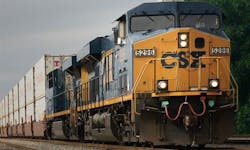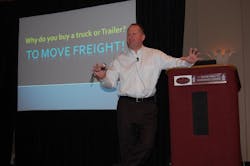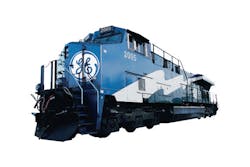Now, however, a spike in bulk commodity shipments – particularly for moving agricultural products within the U.S. – is putting the squeeze on the railroad capacity so vital to making intermodal service a speedy yet lower cost option for freight moves.
And that’s already creating trouble for everyone involved – railroads, truckers, and shippers alike.
Research firm FTR Transportation Intelligence is going to conduct a webinar on this very subject tomorrow – hosted by one of the best intermodal experts in the field, Larry Gross – to try and winkle out not only what’s causing intermodal service issues but how they might be resolved down the road.
I talked to Eric Starks, FTR’s president, about the challenges facing the intermodal segment right now, and he believes part of the problem centers on maintaining “high service levels” across an increasingly congested rail system.“Shippers have just assumed that the high service levels they’ve experienced would just keep continuing,” Starks (seen at right) told me by phone. “But now we’re clearly seeing a rebound in shipment demand for other rail-centered commodities like grain, and that’s returning us to a more ‘normal’ rail environment.”
And it doesn’t take much of an uptick in demand to create what he called “bottlenecks” in the rail system. “Take crude-by-rail shipments,” Starks noted. “They only comprise about 5% of the [rail freight] market, but it takes up a lot of resources; it pulls power units [i.e. locomotives] out of the system.”
An added problem is that drayage fleets – the truckers that move freight to and from the rail heads – are now finding it difficult to find drivers, which is creating something of a secondary capacity crunch within the intermodal sector.
“Typically, it’s easier to find drayage drivers because it’s short haul and they get to stay close to home,” Starks said. “Now all of a sudden they can’t find enough of them.”
All of those issues pose problems for a freight mode that, while still small relative to volumes carried by the rail and trucking sectors, is becoming more attractive to U.S. shippers.
For example, check out these data points compiled by DAT Solutions:
- In February, intermodal volume increased for the 51st consecutive month, up 1.1% compared to February 2013.
- Freight brokers and this party logistics firms (3PLs) are increasingly being asked by shippers to quote rail intermodal transportation, sometimes at the exclusion of truckload.
- Truckload carriers are finding it harder to compete in intermodal-competitive lanes. As capacity tightens, more and more freight is moving to rail-intermodal for long-distance transportation.
- In intermodal-competitive lanes with commoditized cargo, all-truckload fleets will need to cut costs to the bone in order to remain profitable.
That being said, DAT’s analysis also indicated that small, over-the-road fleets can be successful if they are able to handle longer-distance drayage operations, or if they focus strategically on lanes and cargo types that don't lend themselves readily to intermodal.
There’s one final twist to the intermodal capacity situation, courtesy of the Environmental Protection Agency (EPA): emission regulations for locomotives.And if you feel like it’s “déjà vu all over again” as to what the trucking industry experienced between 2002 and 2010 – much less the fuel economy mandates issued on top of those clean air rules these last few years – you would not be mistaken.
In something of a re-run of what trucking went through, the major manufacturers of locomotive engines are racing the clock to get emission compliant products tested and ready for the market – adding yet another dash of complexity to the challenges intermodal now faces.
“This could be a noticeable wrinkle in things, but we just don’t know yet,” FTR’s Starks told me. “But the emission control issue within the railroad industry is going to be a longer-term factor.”
It’ll certainly be interesting to see how all of this plays out in the intermodal space – and how it ultimately affects trucking.



